
Most of the races at the 2012 Donington Historic Festival deliberately looked back in time to overtly historic periods in racing, ones where the aesthetics of the participating cars painted a clear picture of yesteryear. After all, a Jaguar E-Type, Aston Martin DBR1 or Lotus Cortina hark back to an obviously different time when compared with the Group C and IMSA GTP racers they shared the bill with. The late ’80s and early ’90s sports prototypes were a stark counter-point, oozing lightweight materials, modern aerodynamics and technology.

Group C cars emanate a certain spirit – a potent force. They represent the great pinnacle of world sportscar racing: a dozen years between 1982 and 1993 when sportscars reached for and at times overtook Formula 1 as the pre-eminent global motorsport series.
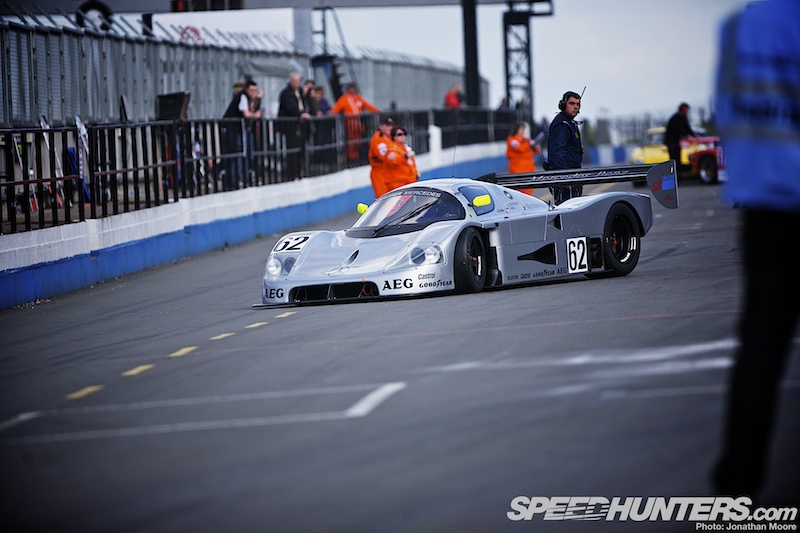
The manufacturers were all there; the top drivers went to sportscars to learn their trade before single-seaters. No longer were the F1 cars unchallenged as the fastest, most technology-laden racers on the planet.
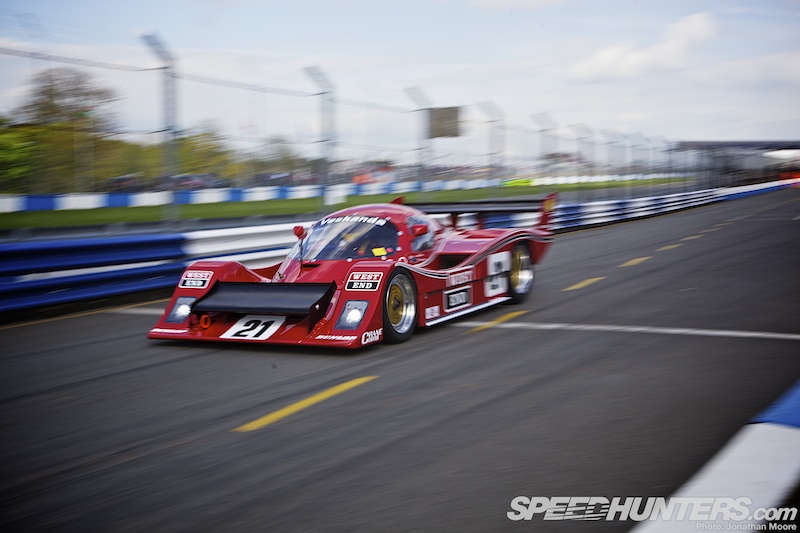
The Group C Racing organisation who oversee the running of GTP and Group C-rules races in Europe constantly manage to find new and rare examples of relevant machinery for their series: it’s not just about Porsches and Jaguars. This year the unique Veskanda was given its European debut: it’s one of only two Australian Group C cars produced. Having dominated the national sportscar scene for three years, the Veskanda got a chance to race at international level in the C1 category when the World Sports Prototype series ran at Sandown in 1988.
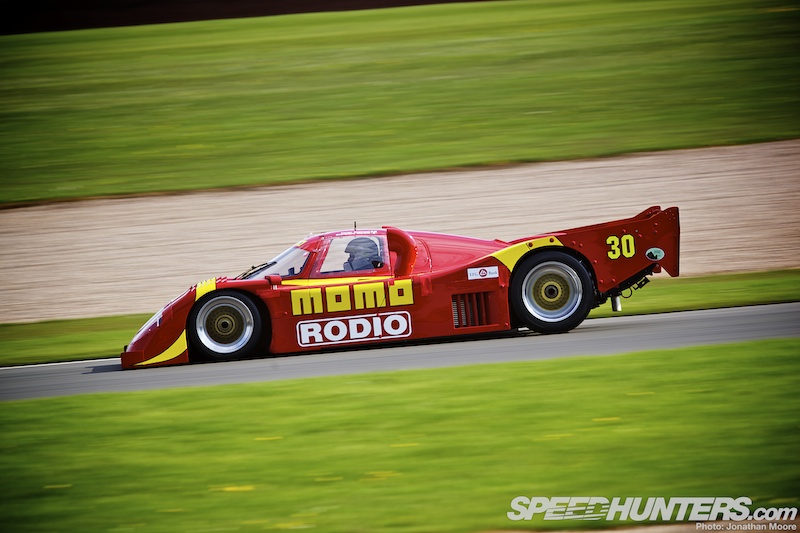
There was also an example of the IMSA Nissan NPTi90, which was developed by the North American arm of Nissan in 1990 and helped take the marque to its second consecutive IMSA GTP constructors’ championship.

The Group C Racing series will take in half a dozen events in 2012, with Donington its opening round. The most prestigious event will be in June, when the Group C cars will once again be the opening act before the 24 Hours of Le Mans. This is the event where everyone brings their car out to play – after all, it’s their natural environment – and usually the turn-out is increased exponentially.
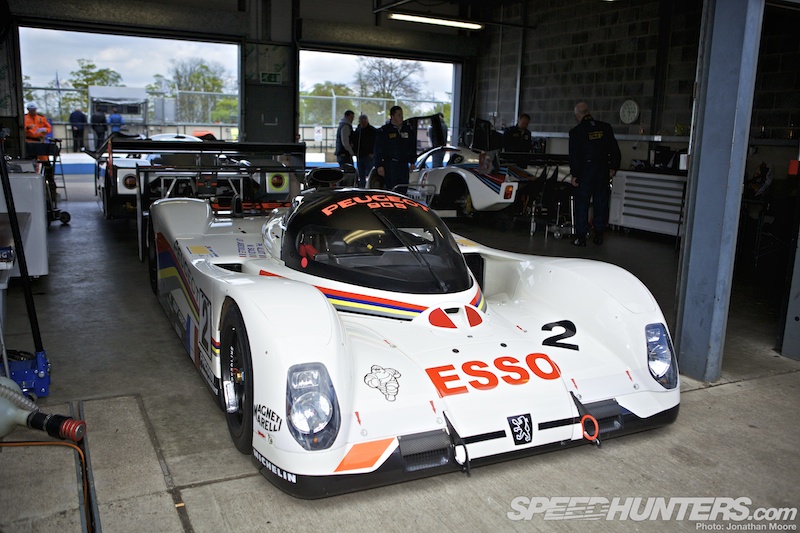
Unfortunately three cars that were present at Donington weren’t able to take part in the race itself, including this Peugeot 905B from 1992. But at least you could still get the chance to see these cars in their carbon-fibre flesh.
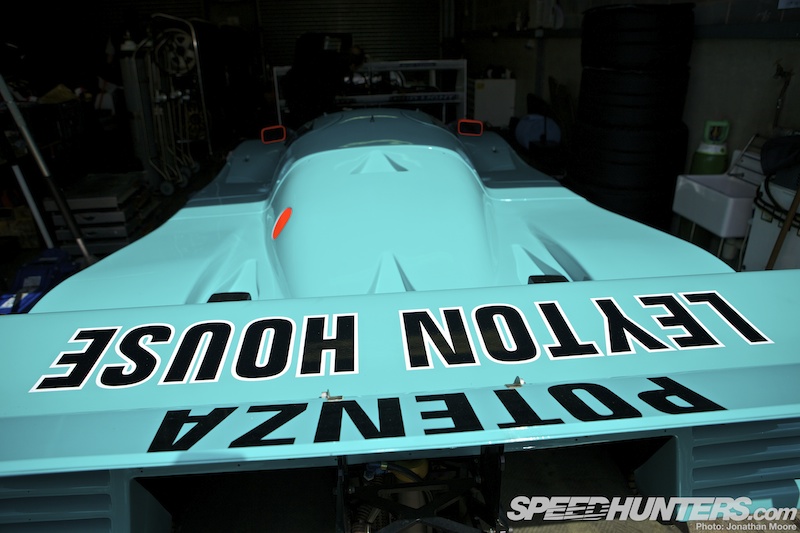
Another non-starter was the third Porsche at Donington: the Leyton House Porsche 962.
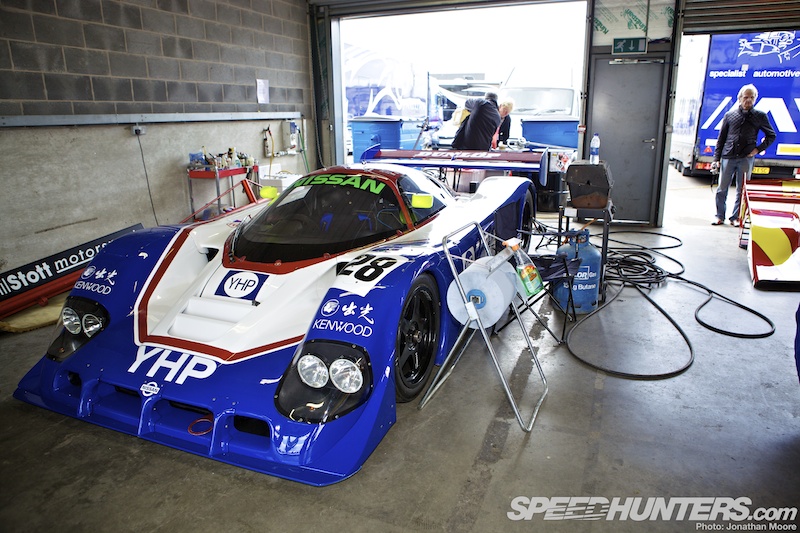
The third car was this Nissan R90CK: five of these cars were entered in the 1990 running of the Le Mans 24 Hours.

With cars of this complexity it’s almost impossible to run them without a professional team behind you, which is why some well-known sportscar teams either run classic Group C cars on the side or have swapped over completely. Chamberlain Synergy raced LMP1 and LMP2 cars at Le Mans between 2005 and 2008 before dipping a toe in the Group C water – they now oversee a whole stable of racers.

Even the second-tier C2 cars are hardly child’s play: they all require an enormous amount of support to keep them running.

As Group C and IMSA GTP evolved and the development was increased so aerodynamics came to the fore: the Jaguar XJR16 produced levels of downforce that would suck in neighbouring planets. All of this aero needs careful management and set-up now as then.
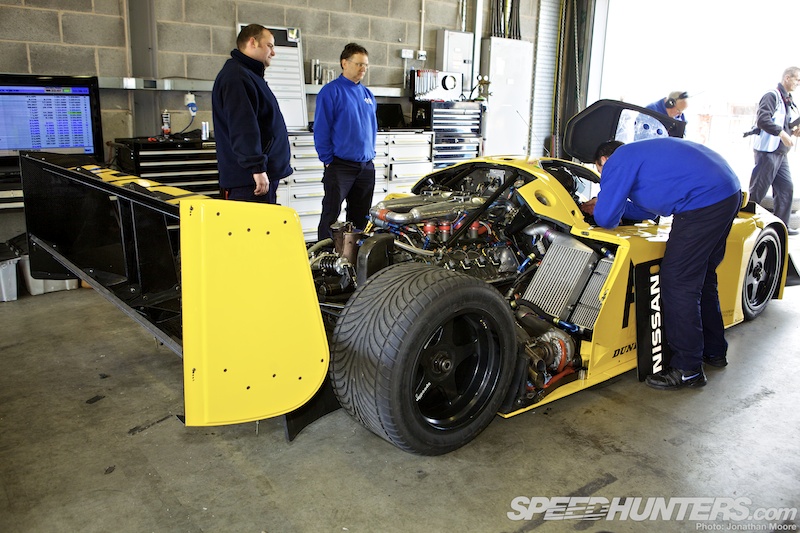
Back in the garages the crews were constantly busy working on their cars. This is the Nissan R91CP that finished second overall in the series last year. The car was originally built in 1991, and was based on the 1990 R90 chassis designed by Lola with a set of updates including improved aero, brakes and suspension refinements.
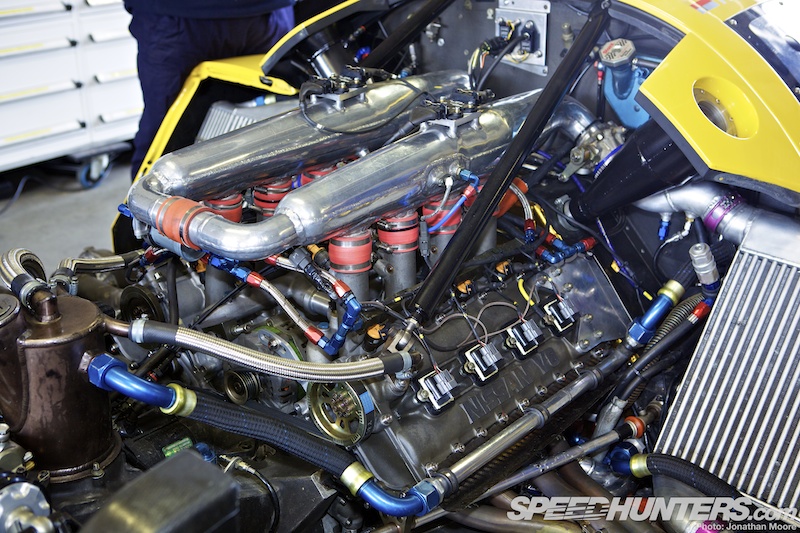
CGA Race Engineering had carried out a full rebuild of the car from the ground up over the winter – the twin turbo V8 is a phenomenal piece of engineering to behold. Its 800hp would prove a problem come the race…
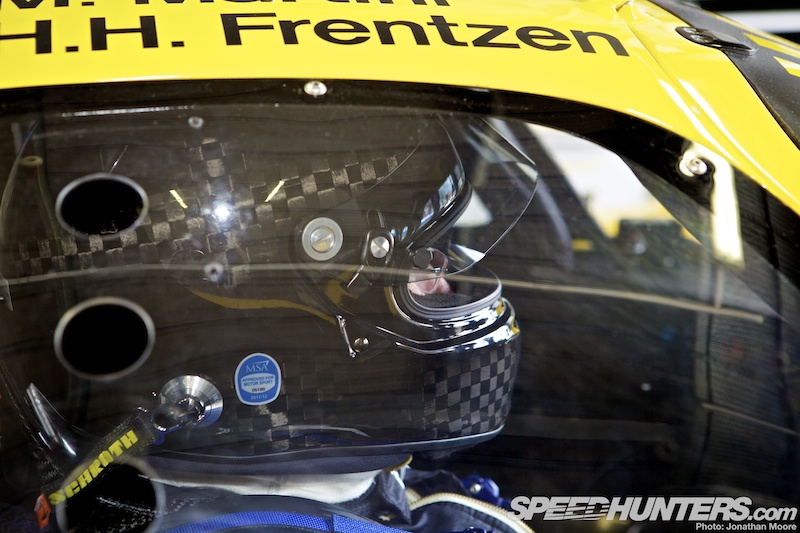
Almost all the cars retain not only their original liveries but also driver stickers, which gives the modern drivers the chance to put their name next to the original crew’s names. Some of these are the greats of the Group C era or ones, like Heinz-Harald Frenzen and a certain Michael Schumacher, represented the next generation of F1 drivers.
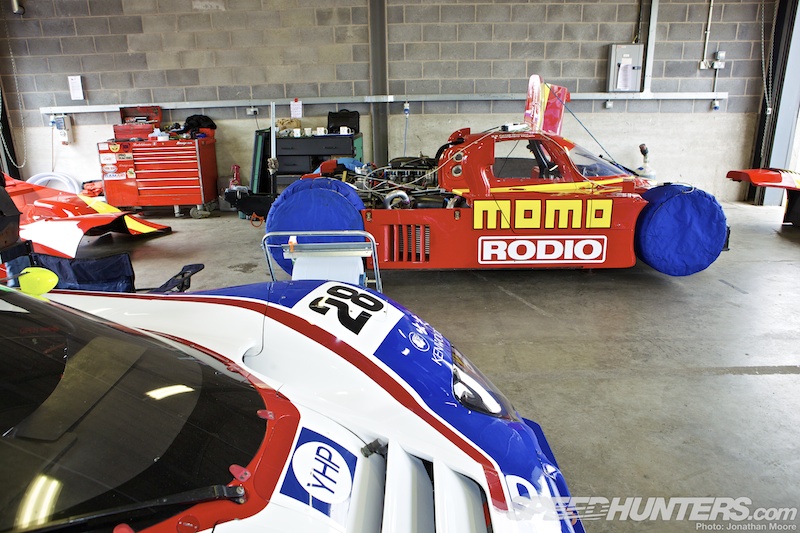
Seeing the cars in the garages, shorn of bodywork, gives you a much better idea of the complexity of the cars. The engine bays are riots of looms, pipes and tubing. You hope they come with manuals when you buy one…
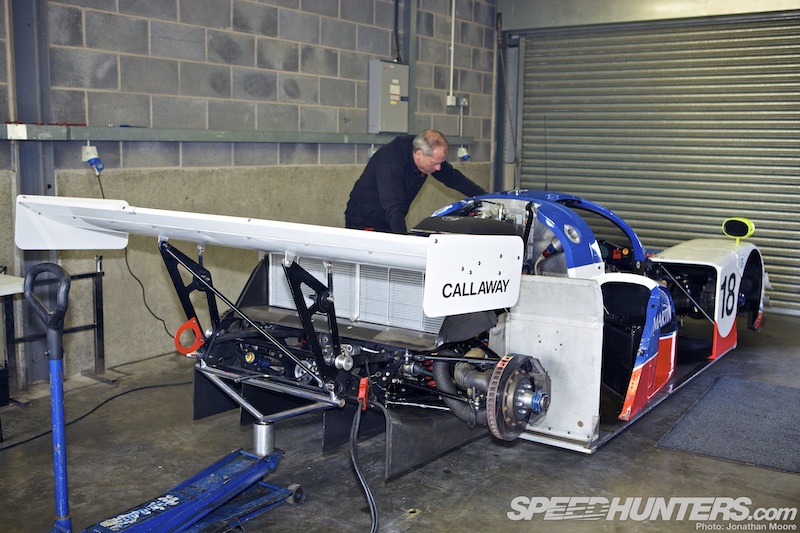
Despite all the potential problems of running these cars, the reverse can be true as well: prototypes that never delivered on their promise in period can be turned into stunningly quick and reliable machines given modern updates and support.

Five Aston Martin AMR1 chassis were built in the late ’80s as a joint programme between Callaway in the States (working on the engine) and Ecurie Ecosse in the UK (running the race team).
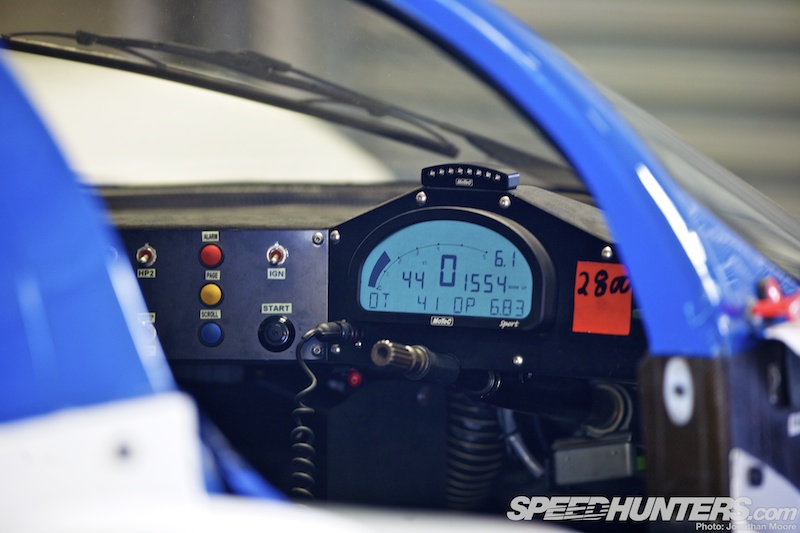
The cars were never given the full support of their new Ford owners, who also owned Jaguar at the time, and the programme was axed in 1989. Now the 900kg, 700hp, V8-powered C1 car is a front-runner.
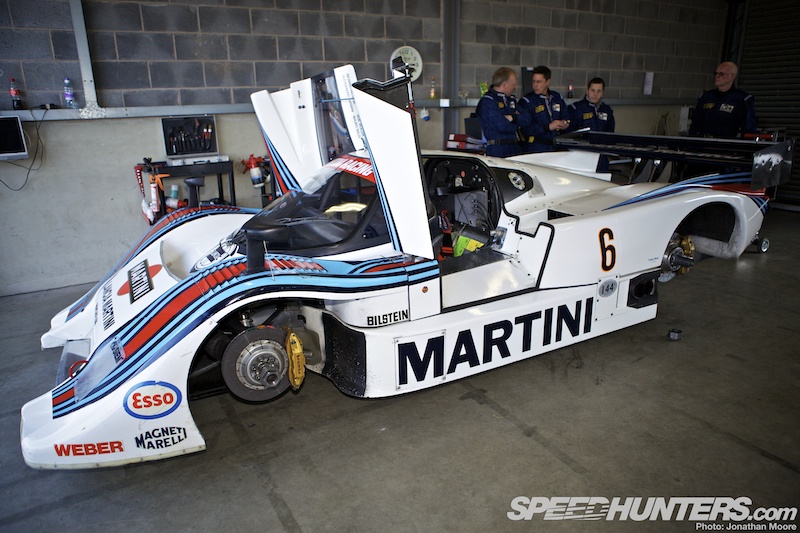
A personal favourite of mine is the Lancia LC2, one of the most beautiful Group C cars ever. Their speed was never matched by reliability in period and despite 13 pole positions the cars won just three races between 1983-86. But they looked amazing nonetheless, with their timeless Martini liveries and Dallara-designed curvaceous bodies.
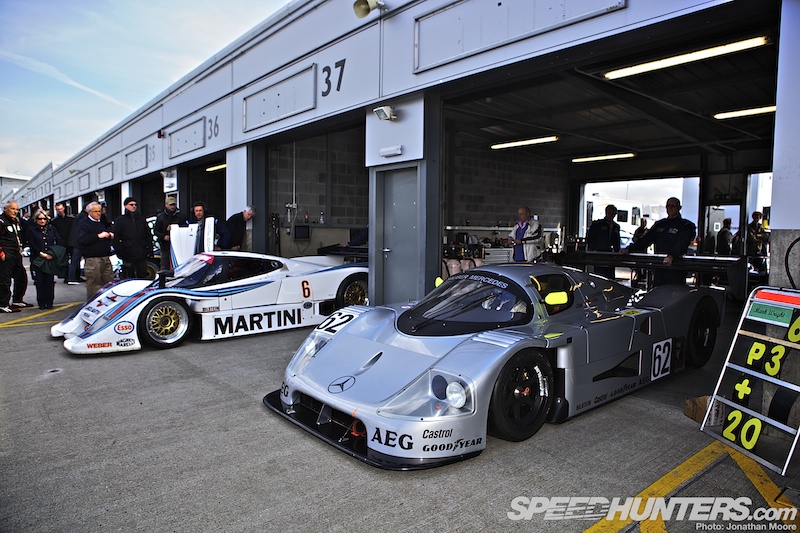
The Chamberlain-Synergy are also wardens of this LC2’s sister – the thought of the pair out on track this year is something that is difficult to come to terms with… The fact that the team also oversee the Sauber-Mercedes C9 (with another C11 back at base), the Peugeot 905 and a Jaguar could lead one to think that they are rather spoilt.
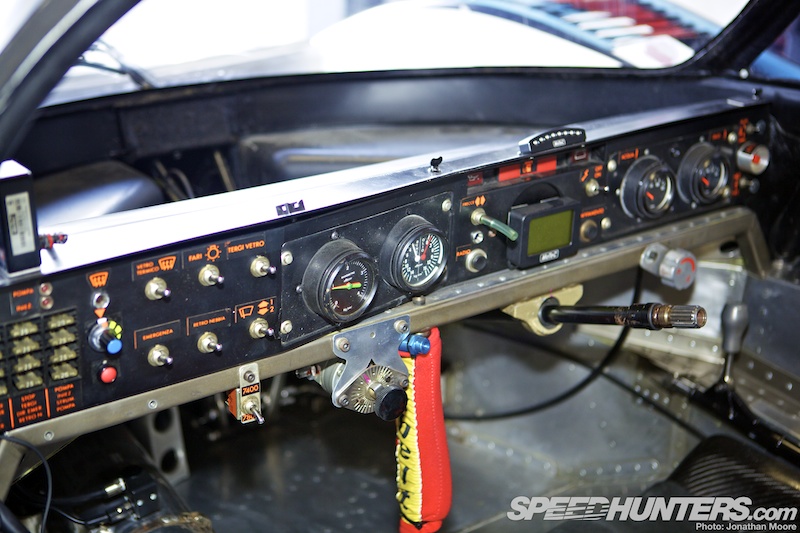
Gorgeous on the outside, it has to be said that on the inside the Lancia smacks of Italian road cars of the era: there’s none of the refinement present in the Porsches, for instance. But still. The emotion! And the sound of the twin-turbocharged Ferrari V8. Oh the sound!
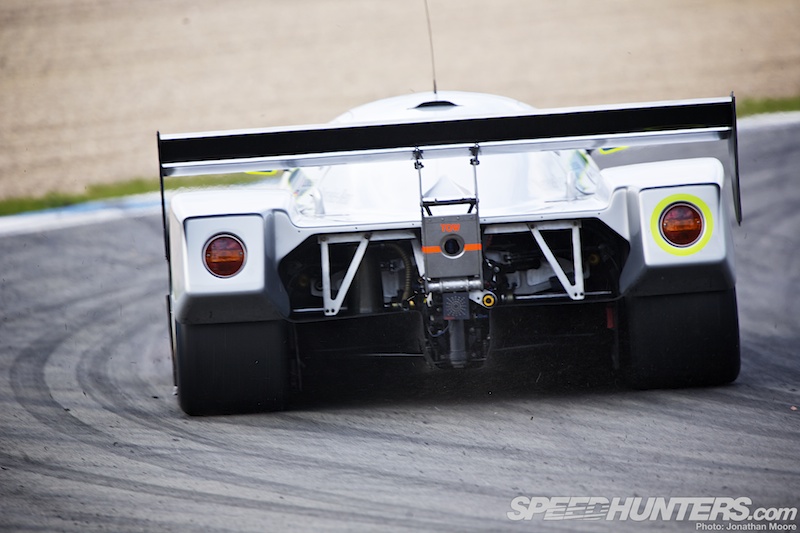
Around Donington the sharp-end of the Group C field was blisteringly fast: the C9 was edging towards the one-minute lap mark around the two-mile National layout, which misses out the Melbourne Loop.
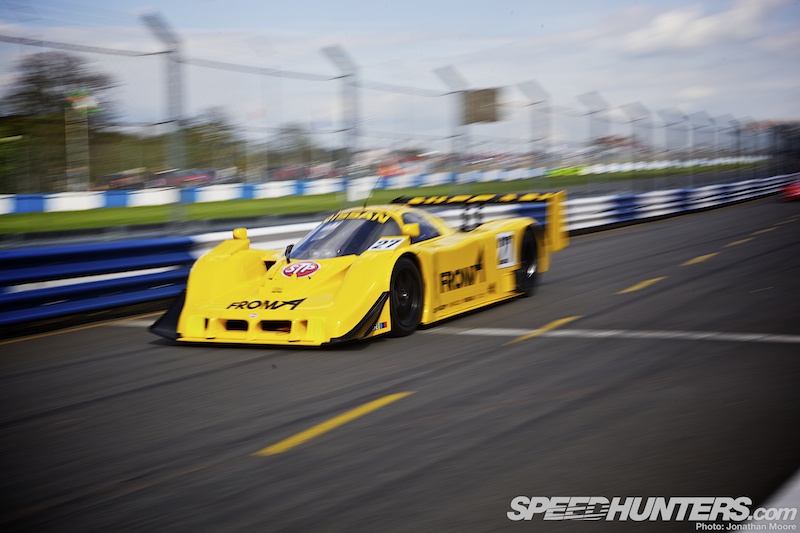
The sense of anticipation rose as the cars began to be pushed out of their garages onto the apron, engines spluttering, and made their way down the pit-lane for their formation lap.
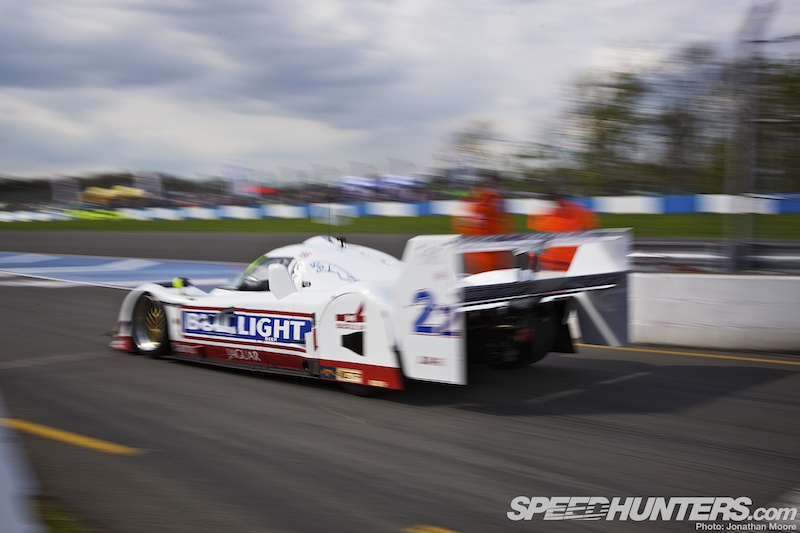
The later cars are brutes in every sense: F1-derived engines and huge downforce packages give them enormous presence on track.
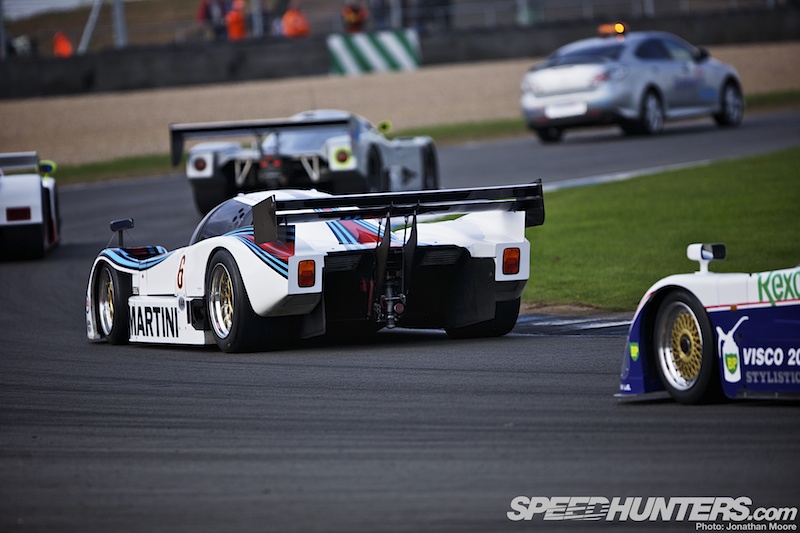
The formation lap was a great opportunity to see the whole grid of cars together: there was quite a difference in lap-times between the cars at the front of the field and the back (which were still generally faster than anything else racing that day), which meant the field would quickly spread out.

The expected five were at the front of the grid: the Aston Martin (driven by contemporary Aston Martin LMP1 pilot Andy Meyrick), Mercedes, Lancia, Spice SE89 and Nissan… A Nissan with cold tyres and 800hp. The formation lap would unfortunately be the only chance to see the R91CP in one piece…
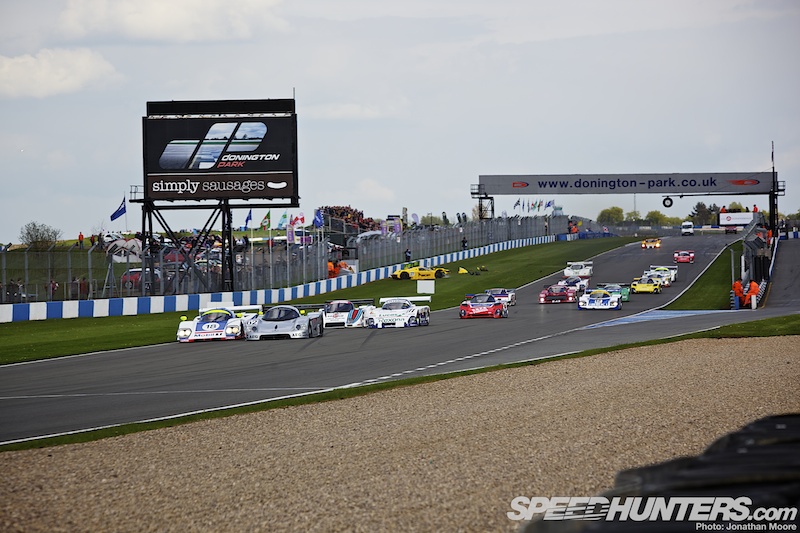
Disaster struck as the lights went out for the rolling start: the Nissan’s tyres spun up and the car speared off into the barrier head-first before spinning round and ripping off the rear. A horrible start for the race – and the newly rebuilt Nissan’s year.

The race continued unabated, as the Aston and Mercedes battled it out up front pursued by the Lancia and Spice.
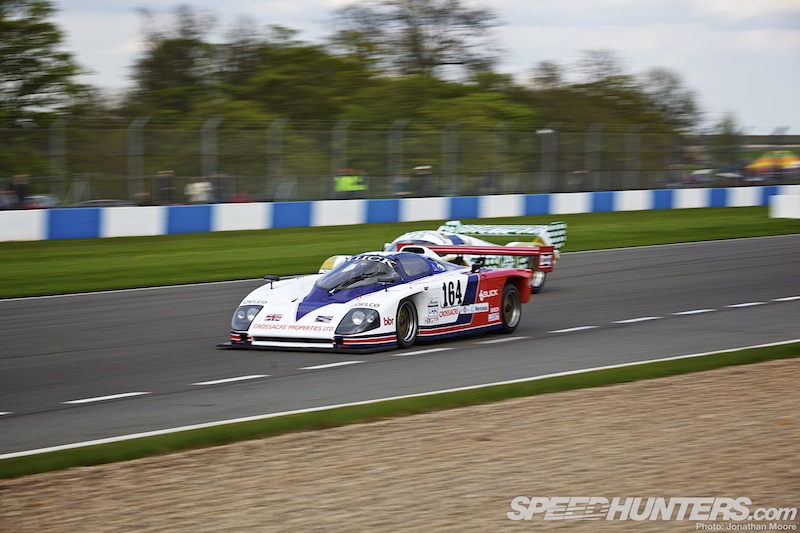
The C2 contingent were also going strongly: Spice, Tiga and Ecurie Ecosse were stalwarts of this class in period, which was created as a low-cost alternative to the big-bucks factory efforts in C1. This is a 1986 IMSA Lights Argo JM19C.
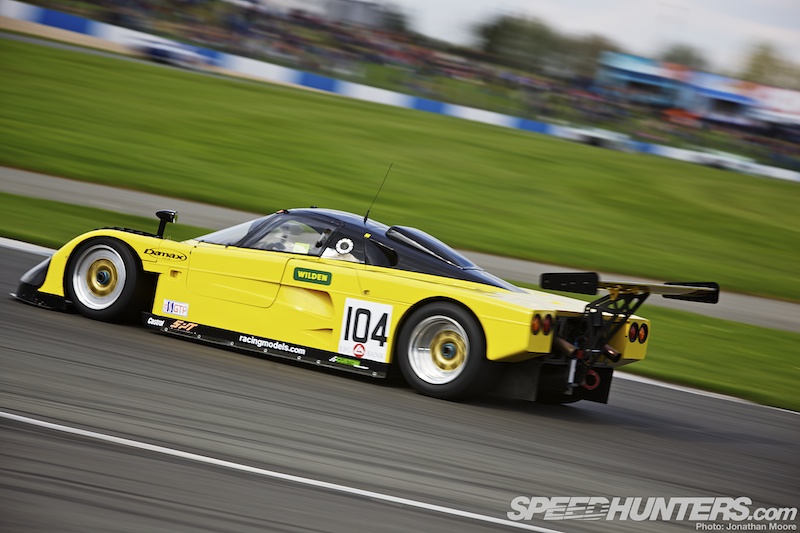
Spice Engineering in particular managed to create a strong business in C2: they moved up into C1 and had notable success in the IMSA GTP class in the US, and built over 30 SE90 chassis. The Damax team were running this Spice SE88 alongside the AMR1 in the race – most recently they were running Ascari KZR1s in FIA GT3.
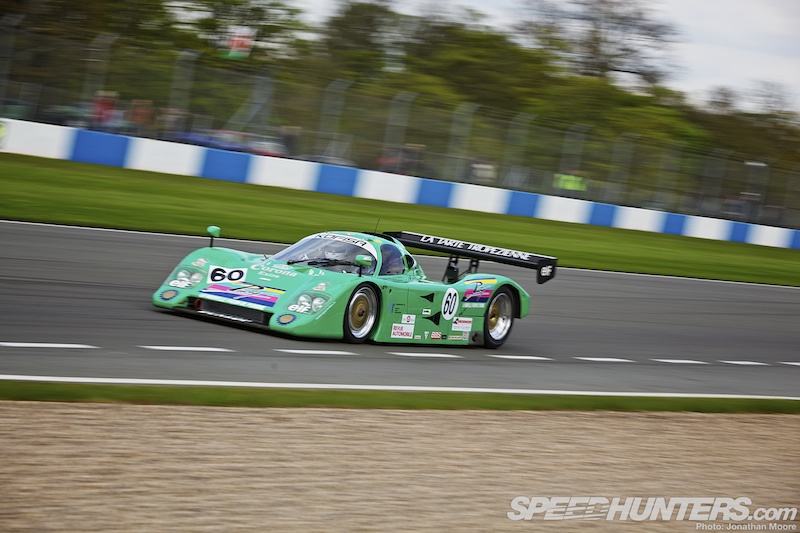
The colour of the Cheetah CT606 C2 racer meant its lines had echoes of a privateer Lancia LC2 entered in 1986.
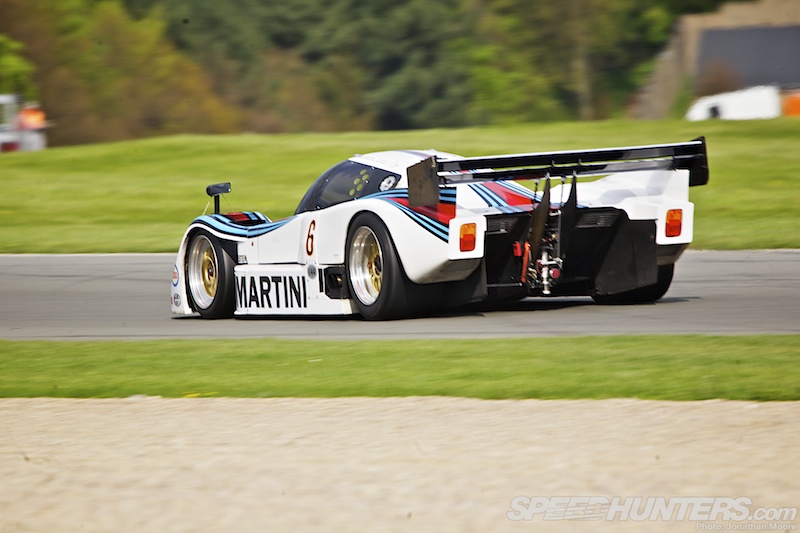
I think you could see their influence… But the howling LC2 cut a very different figure on track from the C2 car.
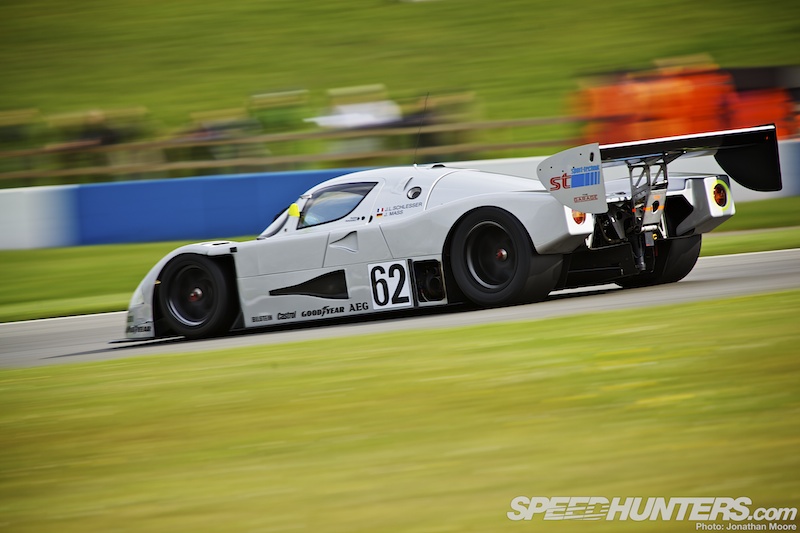
The C9 was an absolute joy to watch: despite being sold at auction in 2008 for over a million pounds (and it being heavily crashed at Silverstone a couple of years ago), the car was being driven on the limit at Donington – an appropriate place for a Silver Arrow.
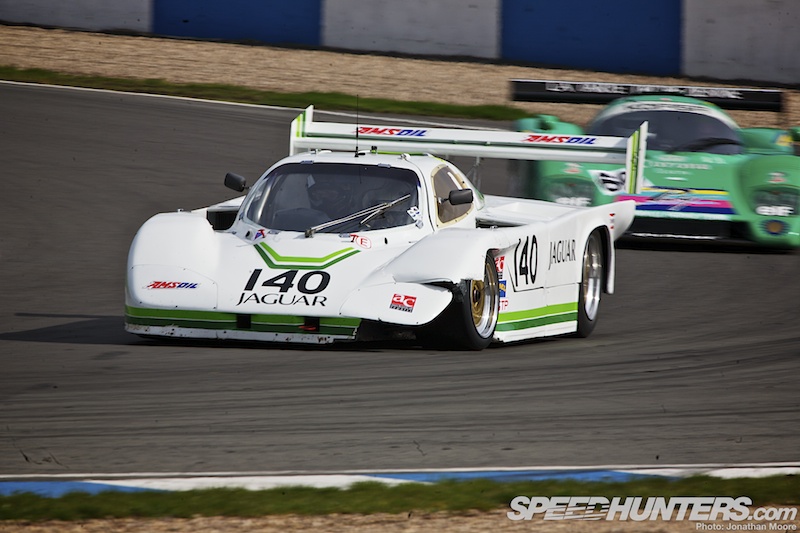
Because the series is open to the full range of Group C cars, it gives the great opportunity to see different evolutions of car side-by-side: Porsche 956 by 962, or more extreme in the case of the Jaguar XJR5B from 1985…
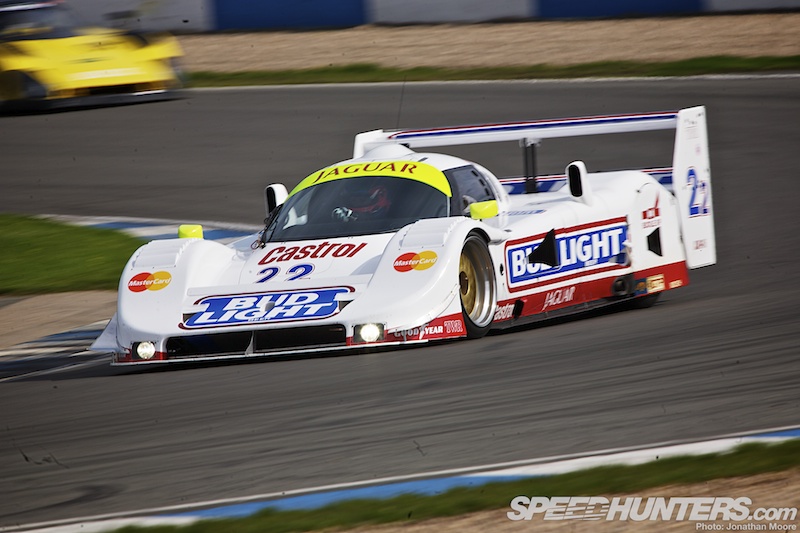
…and the IMSA GTP XJR16 from just six years later. That’s quite a development path.
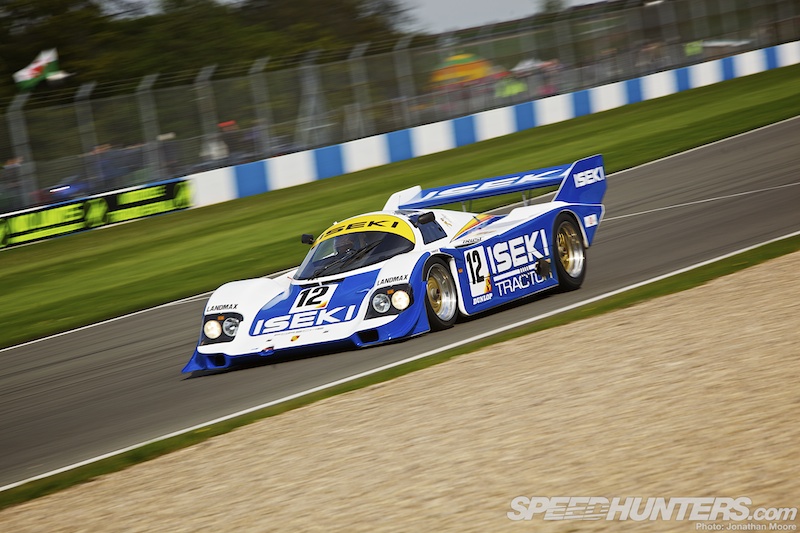
The whoosh of the turbocharged Porsches was an easy aural identifier for the 956 and 962 in the race, as if the shape wasn’t unique enough.
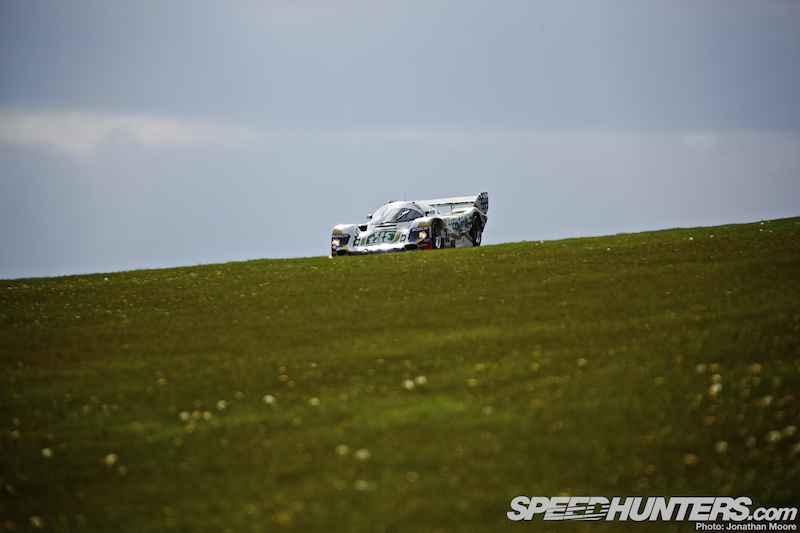
Despite the damage done to the infield and the track itself during the abortive attempt to bring F1 to Donington, the restored track remains one of the most challenging in the country – and one of the best to spectate at.
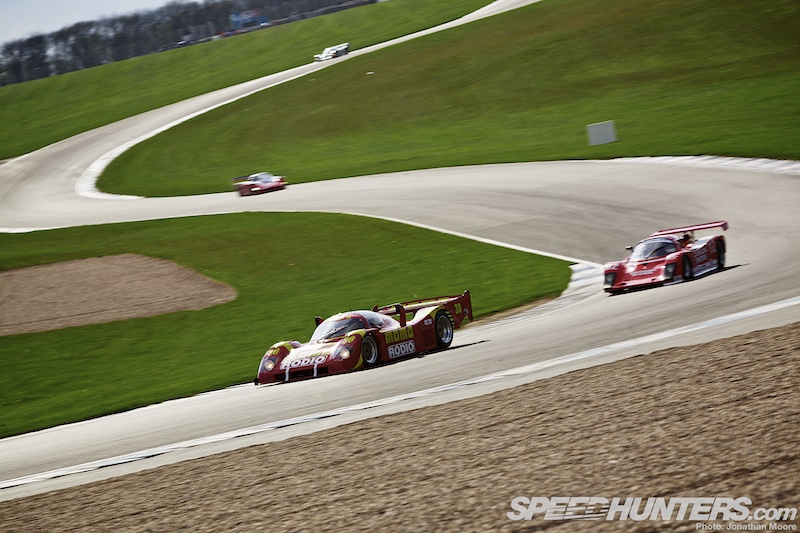
The Craner Curves have an echo of the esses after the Dunlop chicane at Le Mans, but they’re a lot more challenging. Not bad for a piece of tarmac that follows the same line as the original layout of the track from 1931.
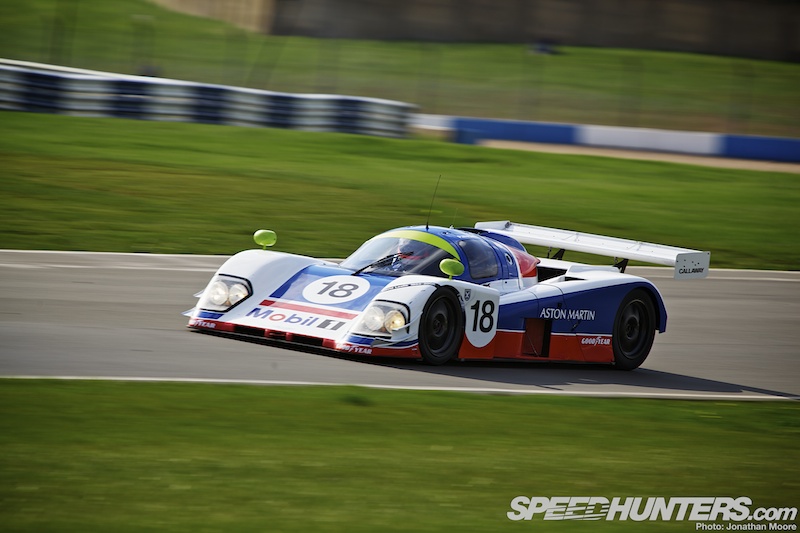
The AMR1 was imperious throughout the race: not missing a beat, it continued to blast round the track for the hour-long race without relinquishing the lead.
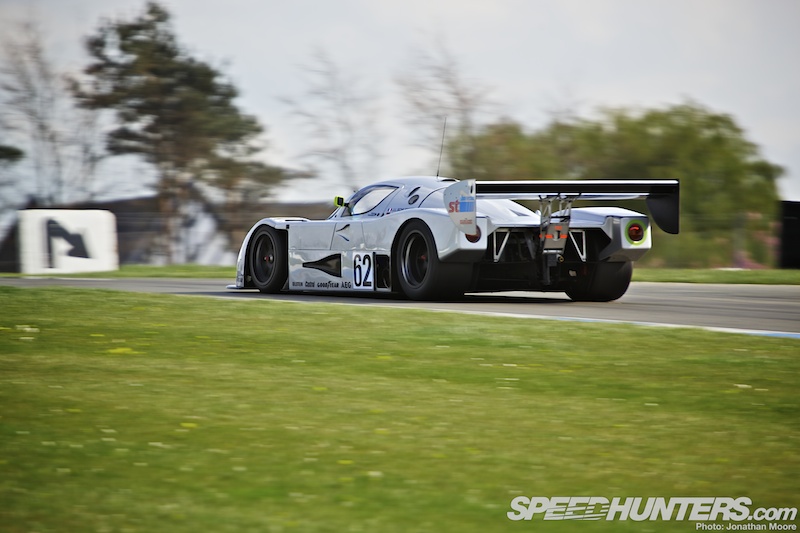
The C9 had been right at the front for the opening half dozen laps, but was then forced to play catch-up after repeating engine problems. But it carried on belting along, happy to just look great out on track – it would eventually finish up 11 laps behind the winners.
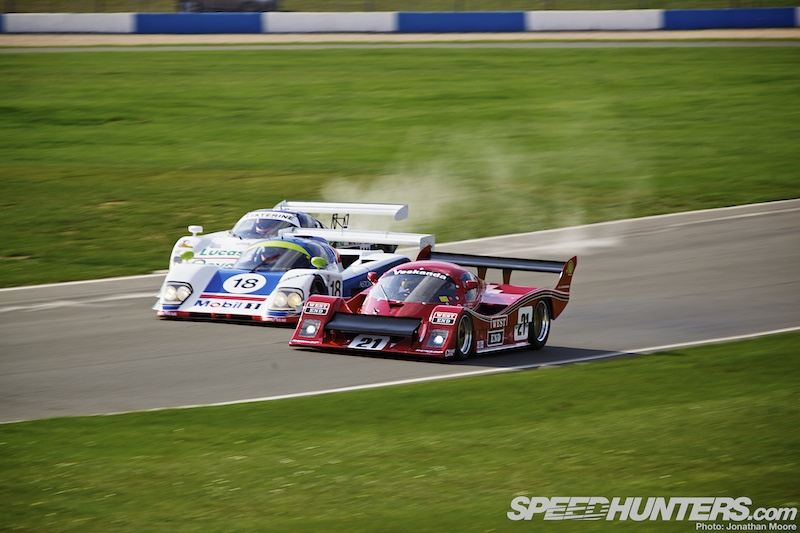
The race for the lead went down to the last lap: the Aston Martin AMR1 had been reeled in by the highly-developed C2 Spice SE89, and almost lost the lead on the rise to Coppice as they came up to lap the Veskanda. A highly-charged end to a highly-charged race! I can’t wait for Le Mans.
Jonathan Moore






Absolutely amazing article. Definitely need some desktops!
@Amemiya I'll second that!!
Incredible, I do love me some Group C. What a magical time in racing, it must be incredible to see these things being flogged. I've been at events where they take parade laps at 70% but seeing them really pushed must be amazing. PS - I'd kill someone for a day alone with that Mercedes C9 and a camera... drool...
Wow ... SH-DHFC-35.jpg
Wow ... http://cdn.dev.speedhunters.com/wp-content/uploads/2012/05/SH-DHFC-35.jpg
905B <3 Sweeeet.
jaw dropping. awesome coverage.
Fantastic stuff. More of this.. Less Balance of performance racing.
Great article Jonathan and some great shots, was a pleasure talking to you earlier on in the day! Thanks, Adam.
I really enjoyed reading this.
Great background information too.
The other C9 smashed into the barrier close to the pit lane entry at the Donington test session on the 3rd May.
Of all the cars to crash eh!
I'd have gone if the Mazdas had been there! Those where the glory days! Those 3 and 4 rotor mazdaspeed cars where simply the best!
@PaddyMcGrathSH no kidding, I looked at that shot for 5 minutes
cant imagine the sound that day....!
Awesome coverage! Nice work guys.
desktops, please.
DANG THIS IS LIKE NO OTHER ITS BEAST THE BOSS
I always wonder how those group c cars like the Peugeot 905B would compare to a modern day car like the Audi Le Mans car around a circuit.
Anyone willing to shed some light on that question... well, let me know.
Saw them (not all) last year in Spa. Loved the 962s, but was amazed by the C9 & C11. The don't howl, instead they really THUNDER down the the straight at incredible speed ... goosebumps
The crowd consisted primarily of middle-aged men ... with big smiles on their faces.